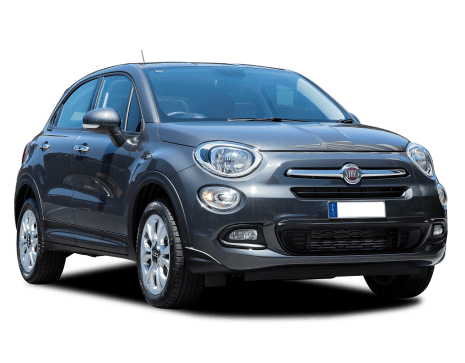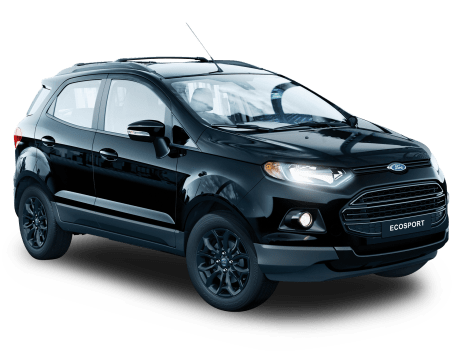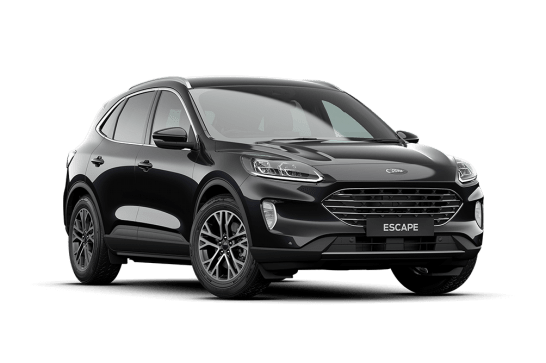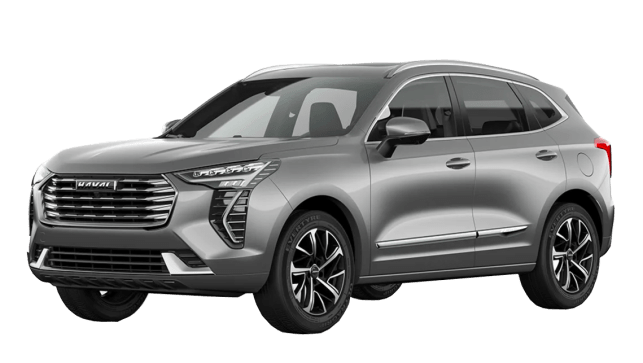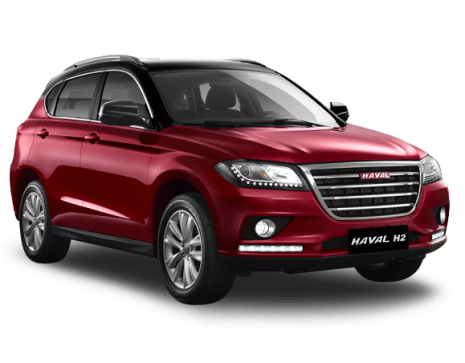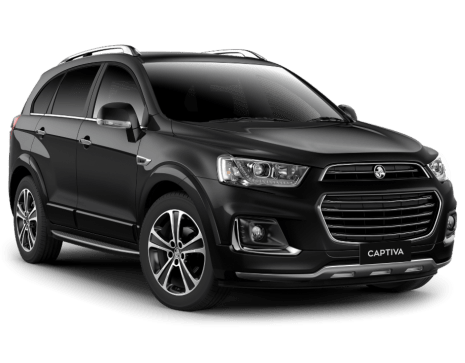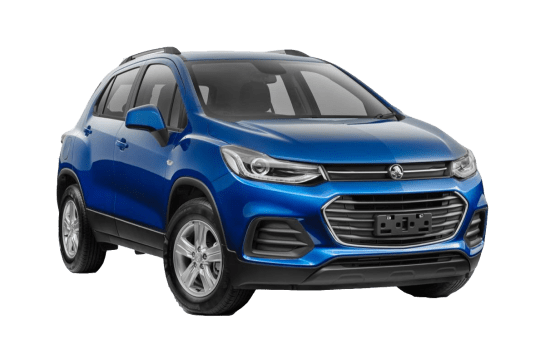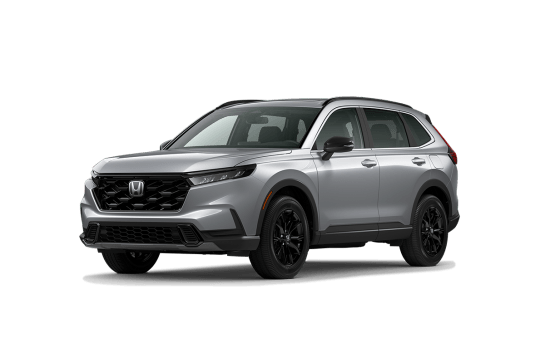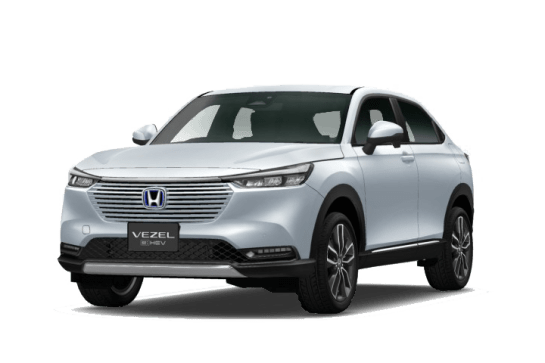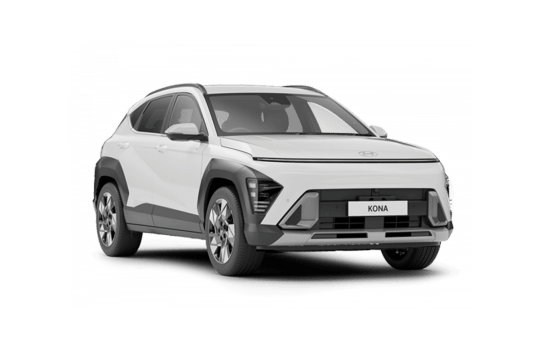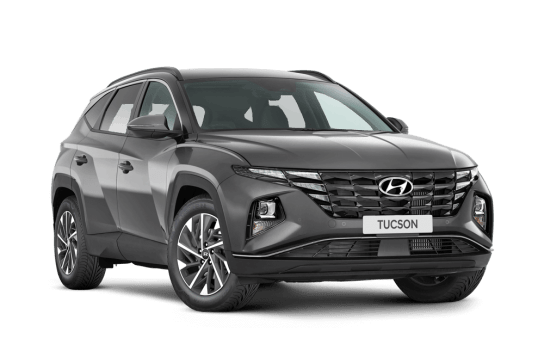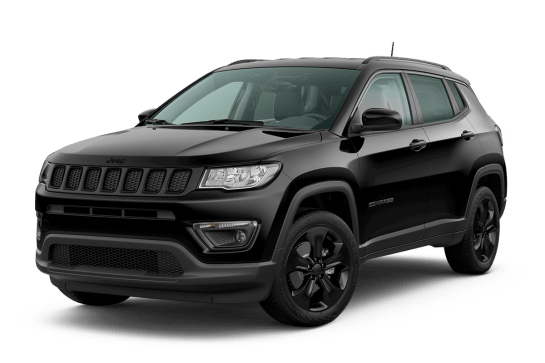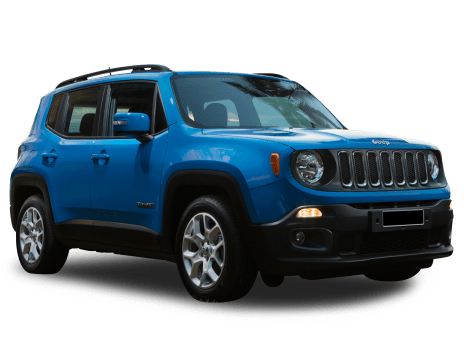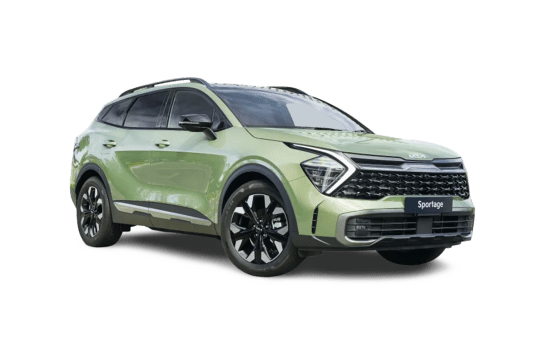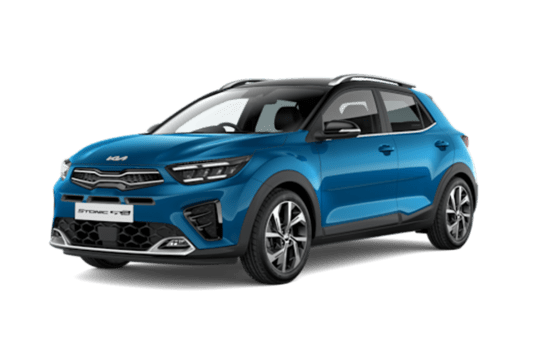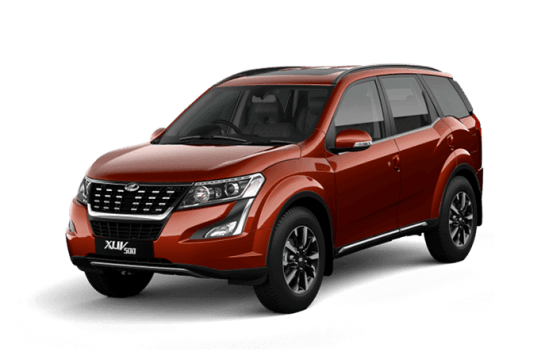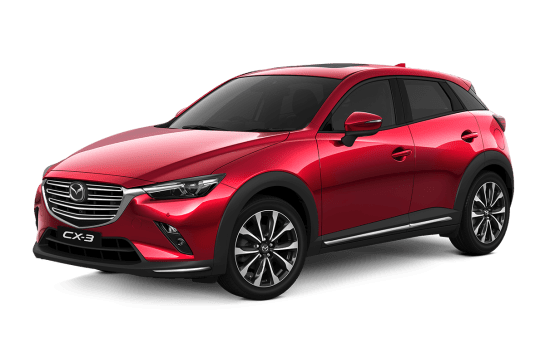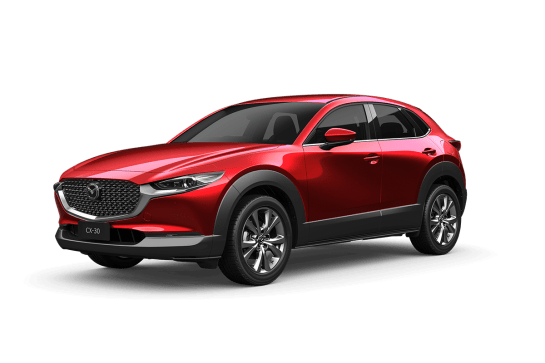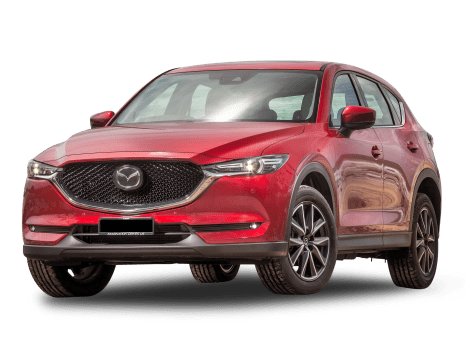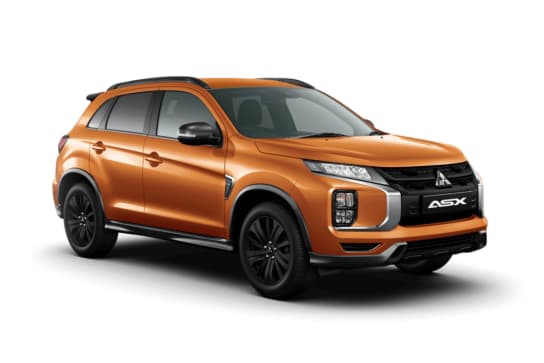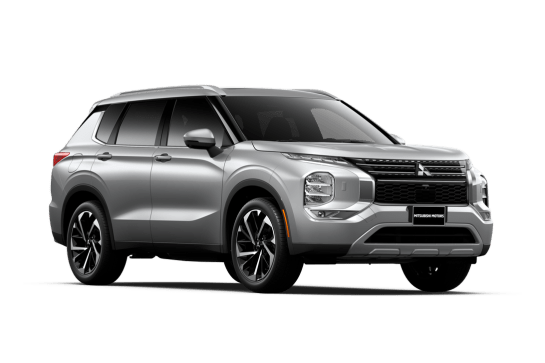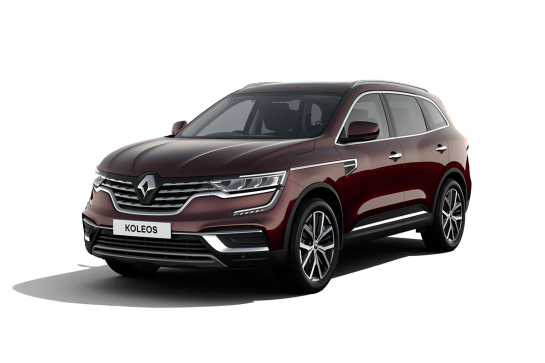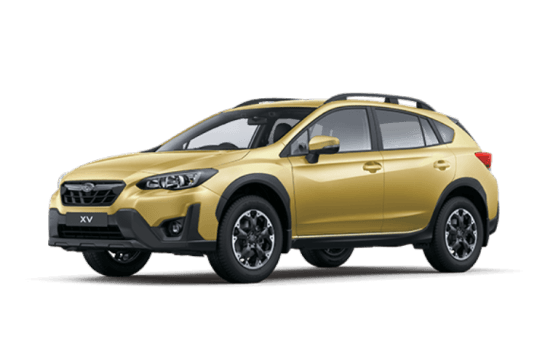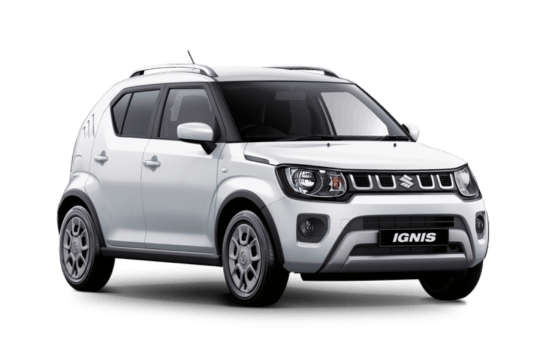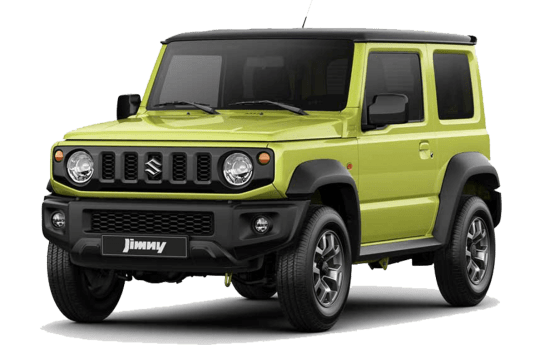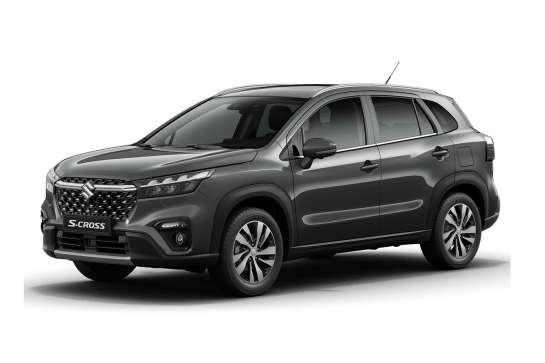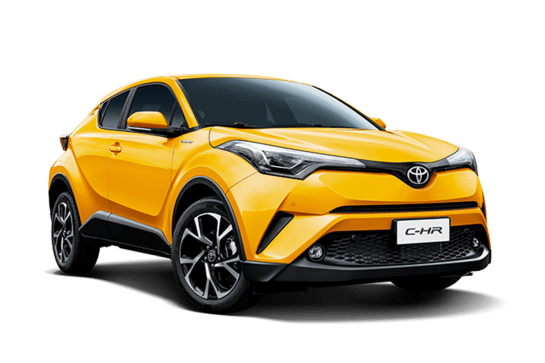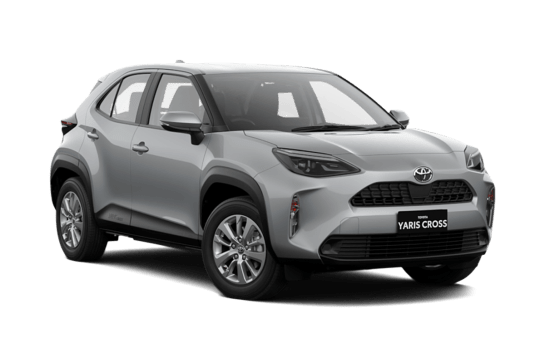
Renault Captur VS Subaru XV
Renault Captur
Likes
- Appealing design
- Premium cabin
- Invigorating driving experience
Dislikes
- Expensive
- Fiddly gear selector
- Requires 95 RON premium petrol
Subaru XV
Likes
- Excellent cabin fit and finish
- Great to drive
- Advanced safety tech
Dislikes
- Not much more fuel efficient than the petrol version
- Pricey
- Small display screen
Summary
Renault Captur
One of Renault’s most successful models globally with over 1.5 million sales of the original, the Captur has nevertheless struggled in Australia since its 2015 launch.
Last year, it was Europe’s 11th bestseller outright, outselling stalwarts like the Toyota Corolla, Hyundai Tucson and Volkswagen Tiguan. Only the Peugeot 2008 and VW T-Roc were more popular amongst SUVs. In contrast, only 533 found homes over here in 2011.
However, with the largely all-new second-generation Captur launched locally last year now gaining market traction with a 200 per cent-plus sales spike, the 123-year-old brand’s VW T-Cross rival may yet finally fly Down Under.
Read more about
We take a look at the recently-released RS Line range-topper, to see just how well the Captur shapes up in urban Australia.
| Safety rating | |
|---|---|
| Engine Type | 1.3L turbo |
| Fuel Type | Premium Unleaded Petrol |
| Fuel Efficiency | 6.6L/100km |
| Seating | 4 seats |
Subaru XV
The idea of a hybrid version of Subaru’s small XV SUV seems to make complete sense – this is a car that probably spends most of its time in traffic but is owned by people who might like to head down a dirt track occasionally. And if it can somehow manage to give off a green glow as well, that could only be a bonus.
But can it actually do all those things? That's the question I’m here to answer, with a bit of real-world testing.
The answer is not a simple yes or no, I'm afraid, because the experience was mostly positive, yet in some ways, I was left wanting more. Allow me to explain.
| Safety rating | |
|---|---|
| Engine Type | 2.0L |
| Fuel Type | Hybrid with Regular Unleaded |
| Fuel Efficiency | 6.5L/100km |
| Seating | 5 seats |
Verdict
Renault Captur9/10
There’s no denying the Captur RS Line is expensive.
But it’s also sophisticated, cultured, comfy, friendly and fun, possessing a quality and capability normally expected – but rarely delivered as roundly – in more premium-branded small SUVs. Seen in this light, the Renault’s value is relative.
Better still, if the price is just too rich for you, there are three cheaper grades offering equal promise. Which is why the charming Captur deserves to succeed in Australia.
$40,800 before on-road costs
Based on new car retail price
Subaru XV7.3/10
Well this is awkward. On one hand the XV Hybrid is excellent and on the other it’s… not.
It’s great to drive on and off the road, the fit and finish of the cabin are superb and the safety tech is outstanding. On the other, the value for money isn’t good when you consider that it’s almost the most expensive XV, but still doesn’t have sat nav, dual-zone climate control, nor the larger display.
And then there’s the fuel economy. Even if we had matched the 6.5L/100km Subaru says we should get, the saving is a mere 500ml for every 100km compared to a straight-petrol XV. The plug-in hybrid version of the XV, as sold in the United States, can get about 2.6L/100km. Now that type of hybrid XV would make far more sense.
Design
Renault Captur
The original Captur was huge in Europe because it was keenly priced, looked good, drove well (being based on the agile Clio IV supermini sure helped) and was intelligently packaged (offering a sliding rear seat).
It’s no shock, then, that the second-gen version revealed in France during 2019 gently evolved the concept with a broader stance, sharper edges and expanded cabin space as a result of a 20mm longer wheelbase and 110mm of increased body length, improving rear legroom and cargo capacity in the process.
Built on the Renault-Nissan-Mitsubishi Alliance’s CMF-B (Common Module Family, B-segment) platform in Spain and shared with the latest Clio (5) sadly not sold in Australia, it benefits from being stronger and sturdier than before, cutting noise levels inside.
Nearly three years on, Captur II remains a handsome and pleasingly proportioned machine, looking somewhat larger than the CX-3 and Puma, yet still trim and taut enough to avoid seeming too big for urban buyers seeking a compact crossover. Its size fits.
Kudos to Renault Australia importers Ateco Automotive for offering interesting, vibrant colour options.
Subaru XV
That Lagoon Blue paint. As mentioned above it’s only available on the hybrid and in the metal the colour is so stunning and different that right now from my desk I can see people rubber necking at it parked out the front of my house. The hue, combined with the ‘e-boxer’ badges, makes for an intriguing package, which, from where I sit, is generating a stack of interest. That was always Subaru’s intention, I guess.
Other hybrid-only design features include the frosted silver elements around the fog lights, the slim-line roof rails and, of course, those ‘e-boxer’ badges.
Those are the only styling differences between the Hybrid and the other XV family members.
Not having the chunky roof racks means the overall height is 20mm lower, at 1595mm, but the rest of the dimensions are the same as a regular XV, at 4465mm long and 1800mm wide.
The XV is a small SUV, but larger than most of its rivals – it’s about 200mm longer than a Honda H-RV, and similar in size to a Kia Seltos or Nissan Qashqai. That said, its cargo capacity isn’t the best – but more on that in the Practicality section below.
We’re just talking about appearances here and the XV hybrid is cute and angry looking at the same time, with its Pokémon-like face.
Nothing has changed about the overall exterior styling since this new-gen XV was introduced in 2017. And that goes for the interior, too, which is a highlight of this SUV.
There’s no other small SUV in the price range with a cabin that feels this good – the craftsmanship is superb, the fit and finish is excellent and the materials (even the plastics) feel gorgeous. I never use the word gorgeous, but you won’t find a more comfortable and luxurious cabin this side of a Lexus.
That said, the small display screen lets things down, and so does the featureless hard plastic on the back of the centre console, which stares at the rear passengers.
Practicality
Renault Captur
There’s no denying how compact the Captur is inside as well. Again, that French city-car DNA shines through clearly.
Yet that doesn’t mean the cabin is cramped or tight, thanks to packaging that’s very intelligently executed, to the point where it will have you thinking twice about needing a larger SUV.
Additionally, the dashboard's layout and ambience possess a Euro chic that is also reflected in the quality feel of most of the switchgear and controls. Even the hard plasticky bits hidden in the lower regions of the console and doors avoid seeming cheap.
The RS Line’s cloth/artificial leather combo with its red striping and contrasting stitching plays up to the SUV’s athletic ambitions; ambient lighting choices are plentiful; the steering wheel is a chunky three-spoke affair that’s lovely to hold and behold; the paddle shifters are astutely sited; and the overall finish corresponds with the Captur’s lofty positioning.
That said, the dash’s design looks a little mid-to-late-last decade, with the 9.3-inch portrait touchscreen already dated after the Cinemascopic hyperscreens dominating the cabins of the latest Mercedes-Benzes, Havals, electrified Hyundais/Kias and others. Remember, the Renault's already celebrated its third birthday in France.
Yet the colourful multimedia system itself is thankfully fast and glitch-free, with clear and easy to understand functionality. The same applies to the RS Line’s digital instrumentation, which are configurable according to which of the drive settings (default/normal ‘My Sense’, Sport or Eco) are chosen. In this regard, the Captur's dash looks bang up-to-date.
In the RS Line, you sit on cosseting sports seats with just the right amount of bolstering. And while the driver’s side lacks lumbar support (you'll need the cheaper Intens for that), we found no fault after hours sat behind the wheel. Note, however, that the front passenger cushion is fixed up high – perhaps too much so for bouffant hairdos.
Points are regained for the simple and effective ventilation system, heaps of storage alternatives including door pockets that will easily swallow a bottle; the hidden phone charger deftly hidden under the gear selector; multitude of USB ports and ample all-round vision, aided by this grade’s excellent 360-degree camera views.
On the other hand, the multimedia system needs a good old-fashioned volume knob, as relying on tapping a screen is annoying and distracting. What is this? 2013? The gear selector might look flash, but it is infuriatingly fiddly. More on that later in the Drive section.
Furthermore, the chrome-like brightwork on the steering wheel spokes reflect sunlight badly during certain points of the day. The instrumentation’s indicator for which gear ratio is selected in manual mode is way too small and carelessly positioned in the bottom right-hand corner, making it difficult and distracting to read at speed. And two rattles reared their ugly heads: from the driver’s door and hatch.
Access to the rear is tight for longer-legged passengers, but once sat, there is more than sufficient head, knee and leg room sat behind front seats set for 178cm tall occupants. The outboard cushion is shaped for comfort, the (fixed) backrest angle is fine for most riders, and a third person can squeeze in the middle as required. There’s decent vision out and the ambience mirrors the front’s quality. Gloomy the Captur is not.
Absent rear-seat centre armrest, cupholders and overhead grab handles is disappointing, but there are rear vent outlets, access to two USB ports and a 12V outlet, sizeable door storage and map pockets behind both front seats.
Further back, the boot benefits from a low loading lip and wide aperture, revealing a seemingly shallow floor, but it's a fake; the sturdy base can easily be removed or lowered to open up a much deeper load area. Ideal for providing hidden storage.
Compared to the previous Captur, luggage volume grows 81 litres. Boot capacity varies from 422L to 536L taking advantage of the unique sliding back seat, moving forward some 160mm. That's especially handy if your rear occupants are children in capsules or booster seats.
Finally, with the 60/40 rear backrests dropped, that extends to 1275L, bringing some 1.57 metres of flat floor space with it.
In summary, then, the Renault’s interior is a clever class act, and in keeping with the RS Line’s premium aspirations.
Subaru XV
To sum things up, room for people is good but the cargo capacity is not. That means I can sit behind my driving position, even though I’m 191cm tall, with about 15cm to spare between my knees and the seatback. Headroom is fine for me, too.
Boot space, however, is 345 litres, which sounds like it could be a lot but when you consider the Honda HR-V has a 437-litre cargo capacity and the Kia Seltos has 433 litres of luggage space, it’s clear the XV’s boot isn’t very big.
Cabin storage isn’t so bad, though, with a big centre console bin, two cup holders up front and two more in the rear fold-down armrest, plus bottle holders in the doors. The hidey hole in front of the shifter is showing its age because my phone was too large to fit into it sideways, but there are other little nooks to store your things in.
Parents should know that the XV Hybrid doesn’t have directional air vents for those in the back seats, but the dark-tinted rear windows were a welcome feature whenever we had our five-year-old back there.
The hybrid has three USB ports – two for charging in the centre console bin and one for media under the dashboard. Need a 12V outlet? There are two.
Price and features
Renault Captur
This largely depends on what you value in a vehicle.
The Captur II range is four-tiered, kicking off with the base Life from $31,300, followed by the Zen from $33,300, luxury Intens from $38,300 and sporty RS Line, as tested, from $40,800. All prices quoted here are before on-road costs unless otherwise stated.
The bad news is, amongst most direct competitors, the RS Line seems needlessly expensive.
Cheaper direct rivals with a similarly sporty bent include the Kia Stonic GT-Line (from just $30,490), Toyota Yaris Cross Urban (from $32,990), Ford Puma ST-Line V (from $35,890), Mazda CX-3 Akari FWD (from $37,190) and Skoda Kamiq Monte Carlo (from $37,590), while even the all-wheel drive (AWD) options of the Yaris Cross (yes, the hybrid too) and CX-3 still come in below the Renault.
In the Captur’s defence, with a high-output turbo engine, it does offer either more power and/or more torque than all of the above.
But then so do some substantially larger small SUVs that still haven’t breached the $40K barrier, like the rapid Hyundai Kona N-Line and Kia Seltos Sport+ AWD turbos, Mazda CX-30 G25 Touring SP, Mazda MX-30 G20e Touring Vision and Citroen C4 Shine. The Citroen seems like a conspicuous bargain, actually, since it easily undercuts the related Peugeot 2008 GT (now from $43,397). Maybe the now less-irked-with-Australia Emmanuel Macron turned the other cheek in that instance.
So, is the Renault bundled out at the first round? No, for the Captur is one of those rare cars that succeeds in justifying its premium pricing with tangible benefits, ones that become apparent with exposure.
More on those later, but collectively the Renault might embarrass costlier yet largely less well-equipped base posh equivalents like the Lexus UX200 Luxury (from $44,445), Mini Countryman Cooper Classic (from $45,000), Audi Q2 35 TFSI (from $45,200), BMW X1 sDrive18i (from $47,900) and Mercedes-Benz GLA 200 (from $60,688).
It’s also at least a relief to hear that the RS Line has almost everything you’d expect in a high-priced small SUV.
On the safety front, this means autonomous emergency braking (AEB) with pedestrian and cyclist detection, Forward Collision Warning system with Safe Distance Warning, Lane Departure Warning, Lane Keep Assist, Blind Spot Warning, Rear Cross Traffic Alert, Traffic Sign Recognition, adaptive cruise control with full stop/go, a surround-view camera, front/side/rear parking sensors, Hill Start Assist, LED headlights/daytime driving lights and tyre pressure monitors.
Other goodies include a 9.3-inch portrait touchscreen, DAB+ digital radio as part of a six-speaker premium audio system, wireless smartphone charger, four USB charging ports and two 12V sockets, multi-screen digital instrumentation, satellite navigation, keyless entry/start, walkaway locking, auto high beam, auto self-parking, auto folding mirrors, myriad-choice ambient interior lighting, sliding front centre armrest console with storage, rear-seat air vents, sliding rear seats, heated steering wheel and rear-seat privacy glass.
These come on top of climate control air-conditioning, paddle shifters, Bluetooth telephony and audio streaming, Apple CarPlay/Android Auto, auto on/off headlights and wipers, electric park brake with auto hold, auto up/down electric windows all-round and illuminated sunvisor mirrors.
Being an RS Line, it also gains contrasting stitching on part-cloth/part leatherette (vinyl-like) seat upholstery, dark grey trim with soft-touch material on dash and door panels, red dash trim, chrome door sills, alloy pedals, RS badges, grey body trim, dual chrome exhaust tips, a unique front bumper and 18-inch alloys with a temporary spare wheel.
Weirdly, while the $2500-cheaper Intens grade includes heated front seats and driver’s seat lumbar support, the RS Line does not. Plus, no Captur features the front cross-traffic alert, intersection braking or front centre airbag tech that some newer (post-2020) rivals do.
Overall, though, the RS Line delivers on specification.
Subaru XV
The XV Hybrid lists for $35,580, which makes it the second-most expensive XV in the line-up, sitting just under the top-of-range $36,530 2.0i-S. The thing is, the Hybrid doesn’t come with nearly as much equipment as the 2.0i-S, and that’s why it loses value-for-money marks in this review.
Standard features range from the disappointing - like the 6.5-inch touch screen, single-zone climate control and halogen headlights - to the impressive; adaptive cruise control, rear privacy glass and proximity unlocking. The Hybrid also scores the same advanced safety tech as the 2.0i-S, which I’ll go into more detail about in the Safety section below.
Other standard features include Apple CarPlay and Android Auto, shifting paddles, X-Mode drive setting, rear-view camera, six-speaker stereo, digital radio, CD player, premium cloth upholstery, roof rails and rain-sensing wipers.
Only the hybrid comes in the Lagoon Blue colour our car wore, and it’s a no-cost option. Good.
How does the XV Hybrid compare with rivals on price? Well, apart from the Toyota C-HR Koba hybrid, there aren’t any other small hybrid SUV rivals. But ask yourself: why are you buying the XV Hybrid? If it’s for ‘green efficiency’ then you really need to skip to the section on fuel economy, because the amount of fuel you’ll save could shock you, and not in a good way.
If it’s for the all-wheel-drive system then you should know that all XVs have all-wheel drive.
Frankly the biggest rival, apart from the C-HR, comes from within – the XV 2.0i Premium, which is $33,420 and is better equipped and boasts excellent fuel economy. A small SUV comparison wouldn’t be complete without the segment’s benchmark – the Kia Seltos, and its Sport + grade with AWD lists for $35,490.
Under the bonnet
Renault Captur
Here’s a fun fact.
Below the Captur’s stylish bonnet is a powertrain you’ll find in the least-expensive Mercedes-Benz A-Class, B-Class, CLA, GLA and GLB, as well as the related Nissan Juke and all-new Nissan Qashqai.
Developed as part of an expanded engine family by Nissan nearly 20 years ago now, Renault’s version is dubbed the TCe 155, a Euro 6-rated, 1332cc 1.3-litre direct-injection four-cylinder turbo petrol unit, pumping out 113kW of power at 5500rpm and 270Nm of torque at a low 1800rpm.
Drive is sent to the front wheels via a seven-speed dual-clutch transmission (also found in the other vehicles mentioned above). In the Captur, it features three specific modes – Eco, Normal (called My Sense) and Sport – that change steering, transmission and throttle responses, as well as a set of the aforementioned paddle shifters.
As with all the grades, the RS Line manages the 0-100km/h acceleration time in 8.6 seconds, on the way to a top speed of 202km/h.
Weighing in at a lithe 1267kg, this Captur boasts a power-to-weight ratio of a healthy 89.1kW/tonne.
Now, if you've been underwhelmed by or read negative reviews about this powertrain's refinement and/or performance in the various Mercedes models, Juke or even Renault's own Arkana, then brace yourself.
All is revealed in the Drive section below.
Subaru XV
The XV Hybrid has a 2.0-litre four-cylinder petrol engine under the bonnet (making 110kW and 196Nm) and built into the transmission is an electric motor (making 12.3kW and 66Nm). The batteries are under the boot floor and they’re charged through energy captured during braking, which is then turned into electricity.
The transmission is an automatic called a CVT (Continuously Variable Transmission). I’m not a fan of CVTs because they tend to take all the oomph out of acceleration, but Subaru’s version is one of the best and the addition of the electric motor gives nice little nudges while driving that the straight-petrol XV doesn’t offer.
Efficiency
Renault Captur
For reasons outlined in the Driving section, the Captur’s natural verve and spirit is contagious, especially if you’re up for a bit of fun, and we ended up extending this car’s legs well beyond what most regular small SUVs experience. In other words, we enjoyed caning it.
As a result of this foolhardiness, fuel consumption probably suffered in our enthusiastic hands, yet we still managed a credible 7.5 litres per 100km gleaned at the pump, against the trip computer’s 7.2L/100km readout.
That’s not too far off the official combined average of 6.6L/100km. Urban/Extra Urban numbers are 5.4 and 8.8L/100km respectively, while the carbon dioxide emissions average is 149 grams/kilometre.
However, note that the 48-litre fuel tank needs 95 RON premium unleaded petrol minimum. Expect over 700km between refills based on the official combined average consumption figure.
Subaru XV
Hybrids are all about saving fuel, but the XV Hybrid doesn’t use a lot less petrol than the regular XV, which makes you wonder what the point of it is. According to Subaru the XV Hybrid should use 6.5L/100km after a combination of open and urban roads, while under the same driving conditions the regular petrol version does almost as well at 7L/100km.
My own testing showed higher consumption. After 401.5km of motorways, urban commutes, city traffic, suburban runs, country twisty fun roads and even dirt and gravel tracks, I filled up with 37.51 litres, which comes to 9.3L/100km. The fuel tank in the hybrid is 48 litres and the trip computer told me I had a range of 90km left. The straight petrol XV has a 63-litre tank.
So, even if you use Subaru’s figures you’re saving 500ml per 100km, which comes to about 70c per 100km if 91 RON is about $1.40. Factor in the fact that the XV Hybrid costs $3970 more than the XV 2.0i-L and you’d have to drive more than 550,000km to make that difference in money back. Again, you have to ask, what is the point?
I’ve tested Toyota’s C-HR Hybrid and while it is only two-wheel drive the combined fuel economy is 4.3L/100km.
Subaru’s XV Hybrid needs to be way more fuel efficient for it to be a worthwhile hybrid vehicle.
Driving
Renault Captur
Has Renault finally broken its dreary automatic transmission curse?
The original Captur (and previous Clio) was fun to drive and comfortable to travel in with the old TCe 90 (0.9L three-cylinder turbo) engine/five-speed manual gearbox combo.
But the old 1.2L four-cylinder auto version with the previous six-speed DCT (dual-clutch transmission, also marketed as EDC for Efficient Dual Clutch) suffered from being slow and laggy selecting gears, when all you wanted was an instant shove forward.
No such ailments afflict the Captur II.
Regardless of the DCT, the 1.3L four-pot turbo is a terrifically muscular performer, stepping off the line quickly and smartly, with barely any hesitation or delay. Perhaps the best we've encountered this side of Porsche's PDK transmission.
Even on hills, it is tuned for linear, jerk-free response, aided by a hill-hold function that eliminates the frustration of rolling backwards on inclines. Crawling in heavy traffic, there is none of the flaring or driveline snatch that the old EDC inflicted. Smooth, swift and sweet acceleration is at last available in a modern auto Renault.
And the news gets better as the roads empty out and open up. Throttle response on the move is strong, with speed building up quickly and smoothly. There’s a deep well of torque to draw upon, helped out by the fast-shifting DCT and good spread of ratios, that keep the engine spinning in the sweet spot. It sounds and feels sporty and alive.
Consequently, we reckon the Captur boasts the best application of this powertrain we’ve yet experienced – even amongst the Mercedes models using a variation of it. If only the otherwise-well-rounded Nissan Juke felt as polished as its Renault cousin.
One gripe, though, is the RS Line's gear fly-by-wire gear shifter, which too often fails to engage when you're in a hurry. You need to be slow and measured when selecting Drive or Reverse. Otherwise you may be left panicking mid U-turn. This is our biggest issue with the Captur.
Otherwise, it's plain sailing for France's diminutive SUV.
The Captur’s punchy performance helps it zip into tight spots effortlessly, assisted by direct yet easy steering that weighs up according to whether you’re in relaxed Eco or Sport mode.
Whichever is chosen, the RS Line’s handling is defined by high levels of confidence and composure that only comes with cars that provide feel and feedback.
This, along with linear steering that’s never nervous at speed, means driving the Captur quickly is a blast. Cornering is clean and precise, with the car naturally getting into an easy, gentle flow that makes driver feel part of the car.
This Renault feels connected to the road in more ways than one – and that’s a real rarity in this type of vehicle. Right up there with the animated Ford Puma, this truly is the Clio of smaller SUVs.
The Captur continues to impress when pushed really hard. Driven along a mountain road, there is some body lean through really fast and tight corners, yet is shines with its excellent roadholding abilities. Likewise, this is one small SUV that seems to relish long highway touring.
Plus, and despite riding on 18-inch wheels, the Captur’s suspension (struts up front and a torsion beam out back, so nothing special or unusual here) is soft enough to soak up most bumps, especially larger speed humps, yet set up to deliver dynamically. It’s way suppler than you might think looking at the twin yellow Renault Sport diamonds on the steering wheel. We suspect the quality Continental PremiumContact 6 215/55R18 H tyres play a big role in this.
Our only concern is the Captur may be a bit too playful in the dirt. Over gravel at speed, the stability and traction control systems take their time to intervene, though they do eventually take over to gently yet emphatically reel in a wiggly rear end before it begins to slide out of control.
Renault has obviously tuned it this way, and it's frankly heaps better than the abrupt or ill-judged set-ups found in other SUVs (hello, Haval), but a mild adrenalin rush will follow if you're not expecting such... initial looseness.
If you love driving and hate the thought of dull SUVs, the Captur is the one for you.
Subaru XV
I said in the video above that I think the XV is one of the best-handling small SUVs for the money and it’s true, even on twisty country roads the vehicle feels planted, with great body control. That’s thanks to well-sorted suspension and the boxer engine design, which lowers the centre of mass, making the car less ‘wobbly’ and more secure in the corners.
If it was just about driving, the XV Hybrid would be my pick out of the entire model range. That’s because I find the basics petrol version has lacklustre acceleration. The hybrid gets little shoves from the electric motor, making it better for moving quickly in traffic. Yep, while the electric motor is tiny and only supplies a small output, when it combines forces with the petrol the difference is noticeable compared to the petrol XV.
Like the petrol, the hybrid uses a Continuously Variable Transmission (CVT). The transmissions are the cause of the indequate acceleration I mentioned, but they seem to be perfectly suited to electric motors.
The entire XV line-up is all-wheel drive, and that includes the hybrid. This is not a four-wheel-drive system, which large off-road vehicles like the Toyota LandCruiser use, so I wouldn’t try to cross the Simpson Desert in an XV. Really the XV’s all-wheel drive is designed for on-road duties but occasional dirt and gravel tracks are fine, as long as you don’t get too wild. Still, it is truly one of the most sure-footed small SUVs for the price that I’ve driven, and the impressive 220mm of ground clearance will let you head down bumpy tracks that would tear the innards out of other small SUVs.
The X-mode function is activated by pressing a button and the throttle, transmission and drive to the wheels is managed automatically to maintain optimum traction.
Where the Hybrid is at a disadvantage against its fellow XV family members is in terms of towing. The braked towing capacity is 130kg less than a straight-petrol XV at 1270kg.
Safety
Renault Captur
Tested in 2019, the latest Captur scored a five-star EuroNCAP crash-test rating, and so has thus been endorsed by the corresponding Australian ANCAP organisation.
On the active safety front, you’ll find AEB with pedestrian and cyclist detection, Forward Collision Warning system with Safe Distance Warning, Lane Departure Warning, Lane Keep Assist, Blind Spot Warning, Rear Cross Traffic Alert, Traffic Sign Recognition, adaptive cruise control with full stop/go, a surround-view camera, front/side/rear parking sensors, Hill Start Assist and tyre pressure monitors.
Note that the Captur’s AEB can detect and brake for cars, bikes and pedestrians between 10km/h and 80km/h day and night, brake for moving vehicles at speeds between 7km/h and 170km/h while the lane-keep assist works between 70km/h and 180km/h.
You'll also find six airbags (front, front/side and front/rear curtain items), seatbelt-off warning warnings for all occupants, anti-whiplash front head restraints, Electronic Stability Control, anti-lock brakes with Emergency Brake Assist with brake-light activation and hazard flashers under heavy braking, and two rear outboard ISOFIX child seat anchorage points alongside a trio of child seat anchorage points.
Subaru XV
Perhaps the best reason for buying the hybrid version of the XV is for its advanced safety tech. Only the XV Hybrid and the top-of-the-range 2.0i-S come with blind-spot monitoring, auto high beams, lane-changing assist, rear cross traffic alert and reverse AEB.
That’s in addition to what’s standard on all XVs, such as forward AEB, lane-departure warning, lane-keeping assistance, lane-sway alert, lead vehicle start and brake-light recognition.
The XV Hybrid also comes with adaptive cruise control.
A note about the reverse AEB – it works, really well and stopped me from backing into a tree while filming the video above.
The Subaru XV was given a five-star ANCAP safety rating when it was tested in 2017.
For child seats, you’ll find three top-tether anchor points and two ISOFX mounts across the rear row.
Despite all this incredible safety equipment you don’t get a spare tyre on the XV Hybrid – not even a space saver, as you do on the other grades. Instead, you get a puncture-repair kit, which consists of a tyre-inflation device and a type of sealant. I’ve had punctures before while driving cars from other brands and the repair kit didn’t fix the leak. For this reason, the XV hybrid is losing marks here – you can’t beat a real spare tyre, especially in Australia where distances are vast, towns are remote, the climate is extreme and a breakdown could be a life and death situation.
Ownership
Renault Captur
Renault offers an industry-standard five-year/unlimited kilometre warranty under its ‘Easy Life Ownership’ program, which also includes five years of capped-price servicing and “service-activated” roadside assistance – as long as you have the work done at a Renault-sanctioned dealership. That's when it is renewed annually.
Service intervals are every 12 months or 30,000km (regardless of make/model, we'd recommend a visit to the garage at half that mileage at the very least, though), and are listed at the time of publishing on the Renault website as costing $399 for the first three and fifth services, and $789 for the fourth (48 months/120,000km).
Subaru XV
The Subaru XV Hybrid is covered by a five-year/unlimited-kilometre warranty, while the battery for the electric motor is covered by an eight-year/160,000km warranty. There’s also a five-year/62,500km capped-price-servicing program. Servicing is recommended at 12 month/12,500km intervals, with the first capped at $350.25, the second at $588.31, the third at $354.83, the fourth at $784.77, and the fifth at $354.86 for a total of $2433.02 over the five years.
